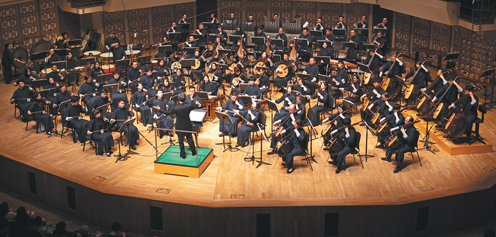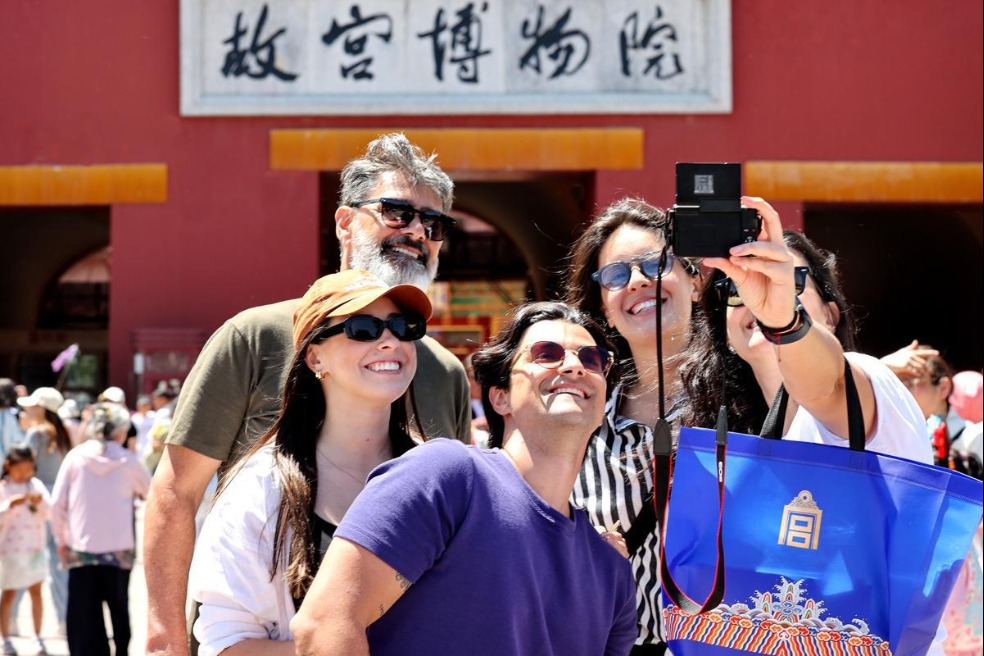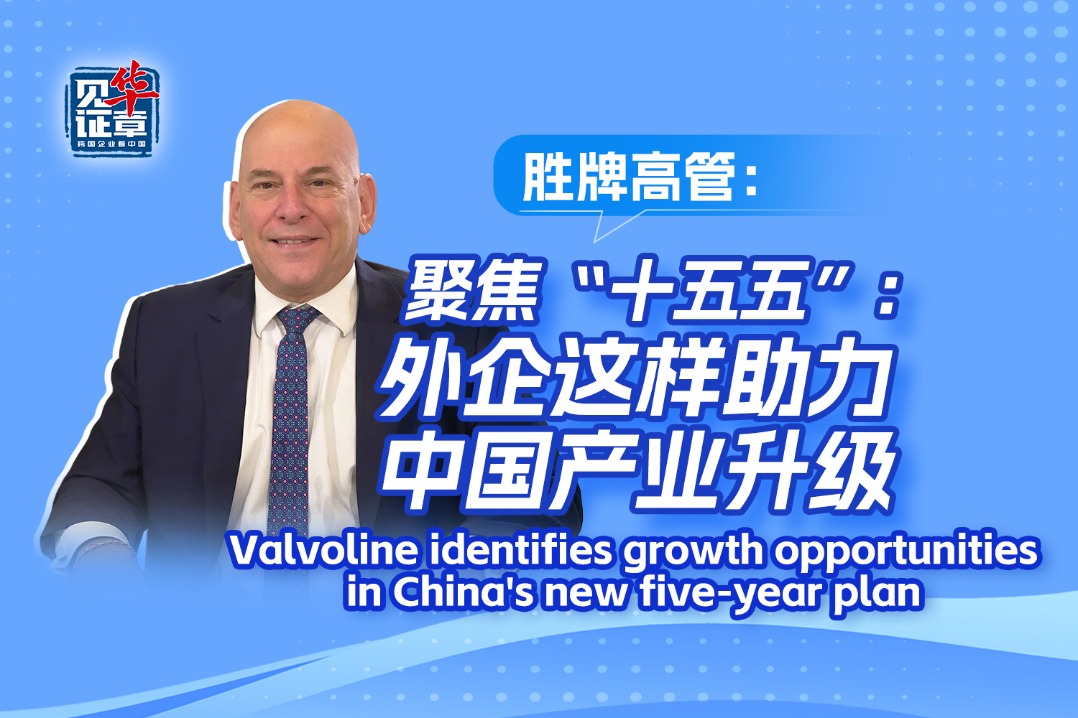MORE THAN TWICE THE SOUND
A duo featuring cello and sheng takes inspiration from an ancient monk's epic journey to retrieve scriptures and has been adapted for concerts, Chen Nan reports.

In 2013, renowned cellist Yo-Yo Ma and sheng (a free-reed wind instrument) virtuoso Wu Tong premiered Duo: Concerto for Cello and Sheng, which Zhao Lin composed for the China Philharmonic Orchestra.
The piece, which combines the rich sounds of the cello and sheng, was inspired by the Buddhist monk Xuanzang's historic journey from Chang'an (modern-day Xi'an, Shaanxi province) to India during the Tang Dynasty (618-907) in the seventh century, in search of sacred Buddhist scriptures. Duo not only refers to a musical duet, but also in Chinese Buddhism, signifies helping people overcome suffering and reach enlightenment.
When conductor Yan Huichang invited Zhao to adapt the work for the Hong Kong Chinese Orchestra, incorporating both the sheng and cello, Zhao was eager to reimagine the piece.
"I still vividly remember the days when I composed this music. I read The Great Tang Dynasty Record of the Western Regions and learned about Xuanzang's epic journey," Zhao recalls.
"With this new version for the Hong Kong orchestra, I see it as an opportunity to further explore the cultural and spiritual themes embedded in the work, while presenting it in a fresh musical context."
The world premiere of this new version with the Hong Kong orchestra will take place under Yan's baton on June 15 at the National Centre for the Performing Arts in Beijing. The concert will feature Wu on sheng and cellist Trey Lee, showcasing a blend of ancient and contemporary sounds.
"I can't wait to hear this piece brought to life by the orchestra," Zhao says. "It will introduce a new musical language."
The concert, with the theme of "Bridging the Glorious Dynasties of Ancient China: Zhou, Qin, Han and Tang", will also include several other works, including Harken Back to Zhou, by Malaysian composer Chew Hee Chiat, who serves as the assistant artistic director and resident conductor of the orchestra. The piece reflects Chew's imaginative exploration of the rites and music of the Zhou Dynasty (c. 11th century to 256 BC), with an embedded commentary on the transition from the Western Zhou to the Eastern Zhou, offering insights into the modern world.
Another highlight is The Terracotta Warriors, a fantasia by the late Chinese composer and conductor Peng Xiuwen, which captures the suffering of Qin Dynasty (221-206 BC) soldiers stationed far from home at the frontier.
The Han Dynasty (206 BC-AD 220) chapter will be represented by Eighteen Variations on a Hu Pipe Melody, adapted from a poem by Cai Wenji, a renowned poet from the Eastern Han Dynasty. The music, arranged by Ng Tai-kong, the former artistic director of the orchestra, will feature soprano Wu Bixia performing alongside the orchestra.
Yan, who has been the artistic director and principal conductor of the orchestra since 1997, notes that this concert represents a special moment in the orchestra's history.
"In 2008, the orchestra became the first performing arts group from Hong Kong to perform at the NCPA's inaugural season," says Yan. "We were invited back in 2009, and now, our performances have become part of a continued cultural exchange."
The concert at the NCPA will mark the beginning of a larger tour, which will kick off on June 13 at the Beijing Performing Arts Centre. The Beijing concert will feature organist Shen Yuan, who will perform Symphony No 2 for Chinese Orchestra and Pipe Organ by composer Kuan Nai-chung.
Shen, a professor at the Central Conservatory of Music, describes the unusual pairing of the pipe organ with traditional Chinese instruments, such as the pipa (a four-stringed Chinese lute), guzheng (a Chinese zither) and erhu (a two-stringed fiddle), as an exploration of a unique sonic palette.
"I believe the combination of Chinese instruments and the resonant sound of the pipe organ will create a rich and fascinating texture," Shen says.
The tour's finale will take place on June 18 at Tianjin Concert Hall, where the orchestra will perform such works as New Year's Eve by Liu Tianhua and Song of the General by Peng Xiuwen. These pieces showcase the rhythmic charm of southeastern China's gong and drum traditions.
Yan explains the overarching vision for the orchestra's musical journey: "The orchestra has forged a series of musical dialogues between ancient Chinese instruments, such as the sheng and guqin (a seven-stringed zither), and the Western pipe organ. On one hand, this makes us proud of our cultural heritage; on the other, it highlights how the development of culture requires openness and integration."
The 71-year-old Yan, who led the orchestra to perform globally and commission over 2,400 new works, credits his upbringing in rural Shaanxi with instilling him with a deep love of folk music.
"Folk music includes traditional Chinese operas, instrumental music, storytelling and dance, making it incredibly diverse. It forms the largest category of traditional Chinese music," says Yan, who graduated from the Shanghai Conservatory of Music in 1983 and served as the principal conductor of the China National Traditional Orchestra from 1983 to 1991.
"China's vast land has led to significant differences in regional musical styles, and for me, this diversity is an invaluable source of artistic inspiration."


Today's Top News
- China, Russia conduct third joint missile defense drill
- Together, we vote for Hong Kong's better future
- Shanxi's green transition an example others can learn from
- Cultural interaction a necessity on road to peace
- HK must cherish its Chinese identity
- HK may ban smoking at building sites






























